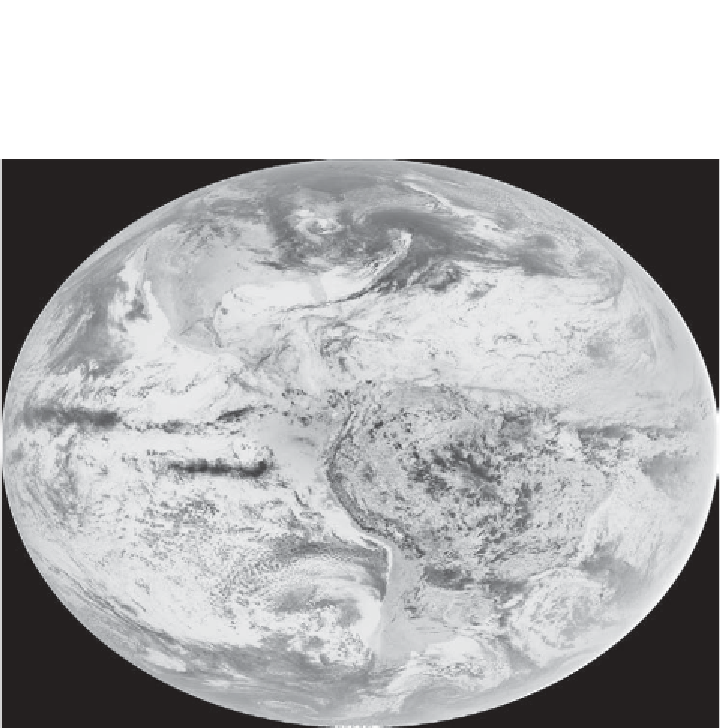Geoscience Reference
In-Depth Information
Figure 4.2
Satellite image of Earth in the visible spectrum to illustrate differences in albedo
between clouds, sea, land and ice. (Credit: Matthew Lazzara. Space Science and Engineering
Center, University of Wisconsin
-
Madison)
orbit around the sun and the fact that the Earth
'
s axis, around which the
Earth rotates, is tilted relative to the Earth
is orbital plane. From this difference
alone it is not surprising that the tropics are warm while the polar regions
are cold.
Further accentuating this difference in incoming solar radiation is the albedo,
or re
'
ectivity of the surface. A satellite image of the Earth at visible wavelengths
shows that some regions are bright while others appear dark. Bright regions are
typically the result of extensive cloud cover or extensive snow and ice cover. Oceans
are often the darkest regions, with non-snow-covered ground in between the dark
oceans and the bright ice-covered regions. Since 99% of the Antarctic continent is
covered by ice much of the incoming solar radiation which reaches the ground is
immediately re
ected back to space, and thus does not contribute to warming
this part of the planet. Of the solar radiation that does reach the Earth
'
s surface



Search WWH ::

Custom Search